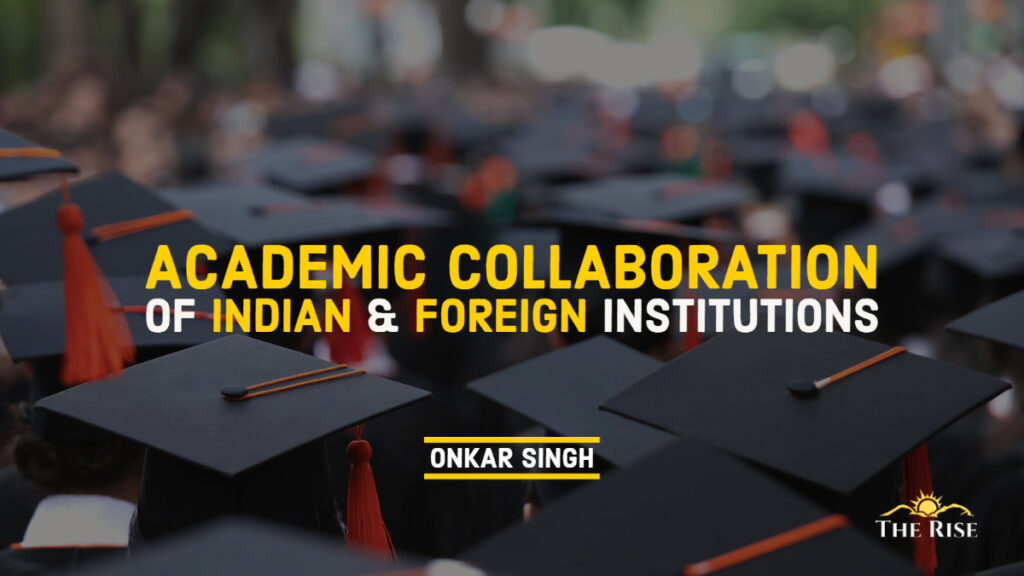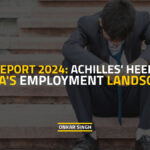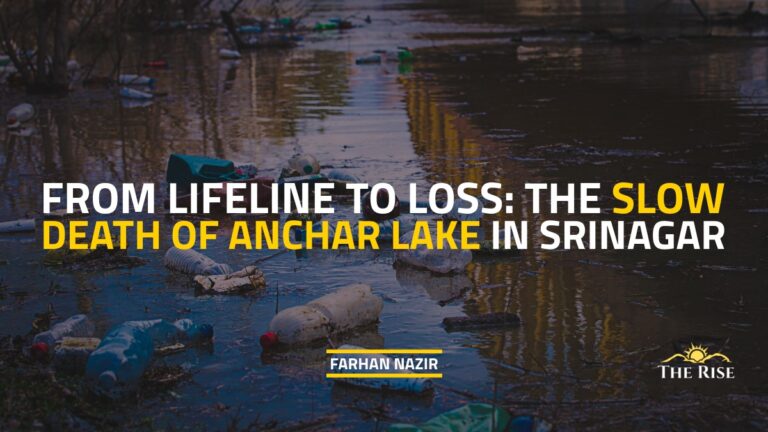The new UGC regulations for academic collaboration are said to have three possible formats of collaboration, namely, joint degree, dual degree, and twinning programmes, with a liberal view of UGC to encourage collaborations. The intent of exposing Indian students to the education system abroad sounds reasonable, nevertheless, the affordability of practising such engagements and their relevance to students calls for honest introspection. The private sector HEIs market their programmes by showcasing their foreign collaborations to woo new students during admissions. In most cases, the poor socio-economic conditions of Indian families may not allow their children to take advantage of the foreign collaborations unless they get sponsorships to sustain the expenses.
The proclamation of the University Grants Commission (UGC) about the new regulations for ‘Academic Collaboration between Indian and Foreign Higher Education Institutions to offer Joint Degree, Dual Degree and Twinning programmes’ has rippled the higher education in the country. Before this, the apex regulator had promulgated a similarly placed regulation titled ‘Promotion and Maintenance of Standards of Academic Collaboration between Indian and Foreign Educational Institutions Regulations‘ in the year 2016. Consequentially, some of the institutions embarked upon academic collaborations as envisaged in the referred regulations of 2016 with the approval of UGC, although the number of such programmes is not very large. Taking a cue from the past regulations, the new regulations for academic collaboration are said to have three possible formats of collaboration, namely, joint degree, dual degree, and twinning programmes, with a liberal view of UGC to encourage collaborations.
Unequivocally, the provisions appear captivating as they will be resulting in the name of collaborating foreign universities getting embedded on degree certificates issued by Indian institutions. But, it is equally important to figure out the reasons for the lesser number of collaborations emanating out of the regulations of 2016 for collaboration between Indian and foreign educational institutions.
The new regulations for academic collaboration are said to have three possible formats of collaboration, namely, joint degree, dual degree, and twinning programmes, with a liberal view of UGC to encourage collaborations.
Why International Collaborations?
For quite some time, internationalization has emerged as one of the key parameters to assess the worthiness of higher education institutions (HEIs). The weighted consideration of attributes like international outlook, presence of foreign students and teachers on campus of institutions, etc. in the global ranking frameworks has catalysed the process of bringing in foreign students/faculty on campuses along with sending Indian students/faculty abroad. This has stimulated the regulators for setting up regulations so that the stakeholders do not land up in an undesirable situation at any time. The intent of exposing Indian students to the education system abroad sounds reasonable, nevertheless, the affordability of practising such engagements and their relevance to students calls for honest introspection.
Also Read: Why do Indians Go Abroad for Higher Education?
Further, it is seen that the private sector HEIs market their programmes by showcasing their foreign collaborations to woo new students during admissions. The perceived difference in the standard of education in foreign HEIs vis-à-vis Indian HEIs incentivizes collaborations, as it strengthens the brand value of degrees offered by Indian HEIs.
Howbeit, the excessive rigour of higher education at graduation & post-graduation in few HEIs of the country is highly appreciated abroad, and there is a great demand of their students for pursuing higher education and research outside. There are ample shreds of evidence of certain HEIs of the country nurturing the best of minds in their campuses at the UG level without these getting retained in any of the HEIs in the country for PG and research due to meagre public financing yielding poor enablers for pursuing world-class programmes. The international collaborations may reduce the tendency of migrating out as the total expenditure for the same programme of particular foreign HEIs will be truncated to a smaller period and, thus, lesser money to be spent.
The private sector HEIs market their programmes by showcasing their foreign collaborations to woo new students during admissions.
Affordability of International Collaborations
The entry of foreign higher education institutions into the higher education spectrum of India has been repeatedly attempted by UGC through well-laid regulations of 2016 and the present one of 2022. It is pertinent to note that the regulations are not dealing with the cost of education in a collaborative mode.
Irrespective of the type of collaboration, the cost of offerings from foreign HEIs will be quite large as compared to their Indian counterparts. Thus, the capacity of Indian parents to bear the cost of education of their wards partially or fully in foreign HEIs needs to be assessed from a larger perspective of access and equity.
Also Read: Brain Drain: An Apparent Loss to the Nation May Prove Lasting Gain to the Profession
For example, an existing Indian engineering institution is offering the international engineering programme leading to 4 year UG degree after charging 1.5 times of regular fees in the first two years. For the remaining two years, the cost of education is as directed by the collaborating foreign university, which in case of University of Leeds is £25,250 (per year) i.e. more than 25 Lakhs per year in a particular programme. For two years, it will be more than Rs. 50 Lakhs to be paid to foreign HEI along with the escalated fees to be paid to Indian HEI in this case.
In most cases, the poor socio-economic conditions of Indian families may not allow their children to take advantage of the foreign collaborations unless they get sponsorships to sustain the expenses.
Undoubtedly, these costs are varying for foreign HEIs. Nonetheless, the net expenditure on education in foreign HEIs is huge as compared to the one offered in Indian HEIs. The exorbitantly high cost of education in foreign HEIs under the envisaged collaborations with Indian HEIs is likely to pave the way for children of affluent families to seek a part of education abroad.
In most cases, the poor socio-economic conditions of Indian families may not allow their children to take advantage of the foreign collaborations unless they get sponsorships to sustain the expenses. Eventually, this will inculcate a sense of deprivation in the meritorious students who are unable to reap the benefits of foreign education opportunities on account of penury while the rich ones will be taking advantage.
In the present circumstances, the number of private-sector HEIs has grown significantly and the cost of education offered by them is high as compared to similarly placed public sector HEIs because of the self-financed nature of education in the private sector HEIs. The rich-poor divide is already visible concerning the affordability of higher education and the instances of meritorious poor students finding it impossible to bear the education expenses and discontinuing studies are often seen. The collaboration between foreign and Indian HEIs could be another blow to students from poor families and eventually lead to loss of opportunities for many.
Also Read: Metamorphosing Industry 4.0 to Industry 5.0 Requires Engineers From All Domains
Will Indian HEIs Thrive with Foreign Collaborations?
The entry of foreign HEIs through proper engagement with Indian HEIs will be lucrative because of the demographic dividend available to the country. But the dependence of Indian HEIs on foreign HEIs for qualitative improvement will germinate parasitic tendency. And, the possibility of Indian HEIs finding it difficult to thrive cannot be dismissed. Under the collaboration, the challenge of improving the quality of education will be partly shared by foreign HEIs and make Indian HEIs apathetic towards bringing in positive changes. Therefore, the collaborations with foreign HEIs will help Indian HEIs in rolling out jointly named degree certificates with good brand value, which ultimately depressurizes Indian HEIs from executing immediate strategies for improving their worthiness.
The dependence of Indian HEIs on foreign HEIs for qualitative improvement may germinate parasitic tendency. The challenge of improving the quality of education will be partly shared by foreign HEIs and make Indian HEIs apathetic towards bringing in positive changes.
Also, the Indian HEIs will be incurring a loss of revenue for the period of study of students out of their premises, in contrast to these academic collaborations enriching the foreign HEIs in terms of additional students pouring into their campus and draining out of Indian resources to foreign countries. As per the RedSeer report, the number of Indian students going overseas for higher education grew from 440,000 in 2016 to 770,000 in 2019 and may go to 1.8 million in 2024 while the spending by Indians may touch $80 billion a year by 2024.
You May Like: Internationalization of Indian Higher Education
Indisputably, the internationalization of higher education is desirable and also mandated by National Education Policy (NEP) 2020, but the endeavour to bring in foreign students to Indian HEIs will fetch more revenue and supplement the public spending on higher education along with good cultural exchange. The exodus of Indian students abroad necessitates de-escalation to diminish both the money and brain drain. The objective of holistic amelioration of the state of affairs regarding governance, financing, teaching and research infrastructure, and education processes must not be pushed behind for harnessing the full potential of the country.
Disclaimer: The views expressed in this article are of the author solely. TheRise.co.in neither endorses nor is responsible for them.
About the author
Prof. Onkar Singh is the former Vice Chancellor of Veer Madho Singh Bhandari Uttarakhand Technical University, Dehradun, He has been the Founder Vice-Chancellor of the Madan Mohan Malaviya University of Technology, Gorakhpur (U.P.). He is a Professor of Mechanical Engineering at Harcourt Butler Technical University, Kanpur (U.P.).








































Never thought that the higher education reforms would become so market friendly so soon. You have highlighted not only the broad contour but also the details of things to come.
Present moves of regulators seem hell bent to make Indian higher education system parasitic and shift from public to private sector. Why no effort is to improve the higher education of Government sector?
Pingback: An Era of Dynamism in Higher Education - TheRise.co.in
Pingback: Heading Towards Extinction of Formal Education? - TheRise.co.in
Pingback: The New Geopolitics Of Global Education - TheRise.co.in